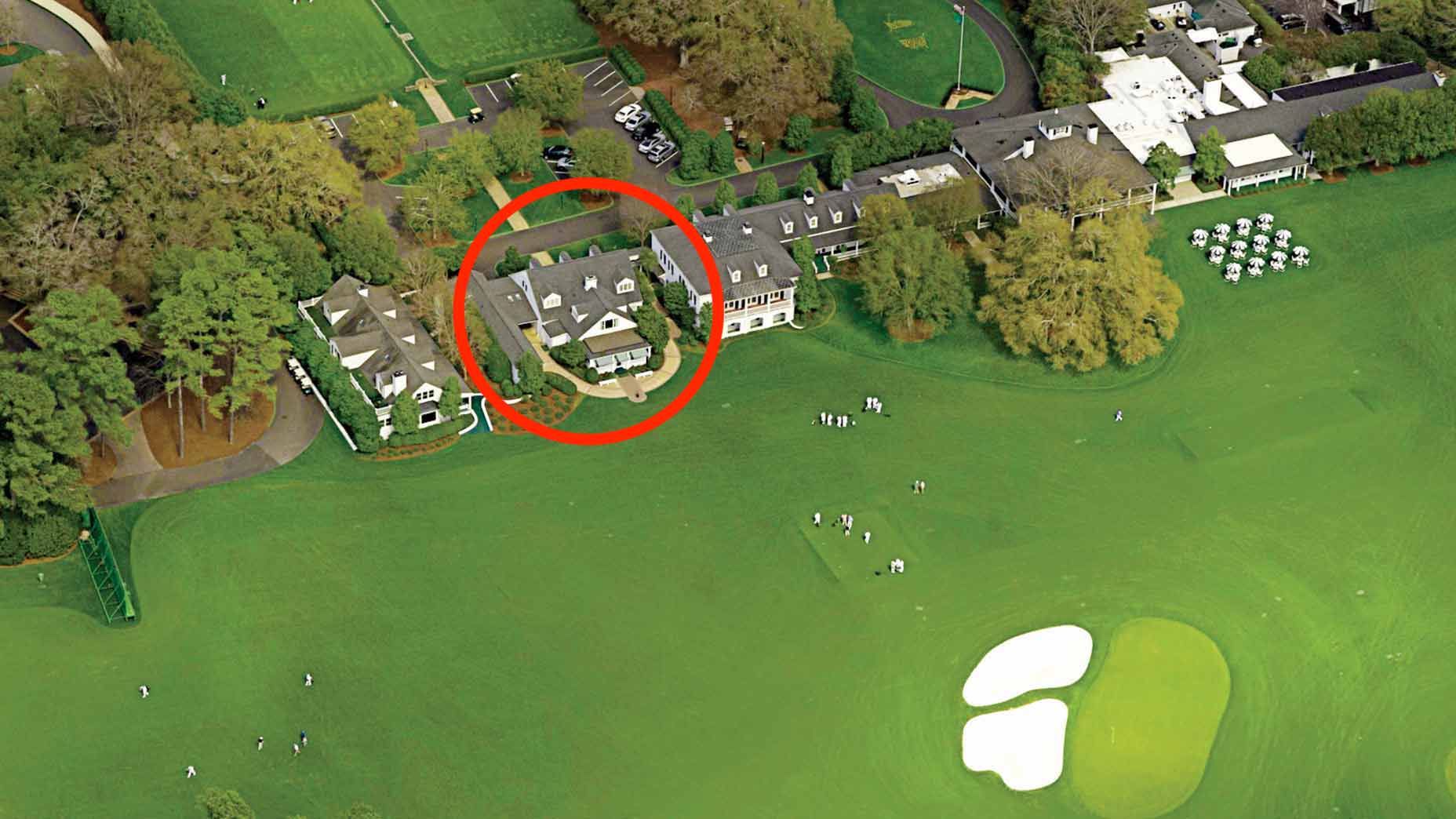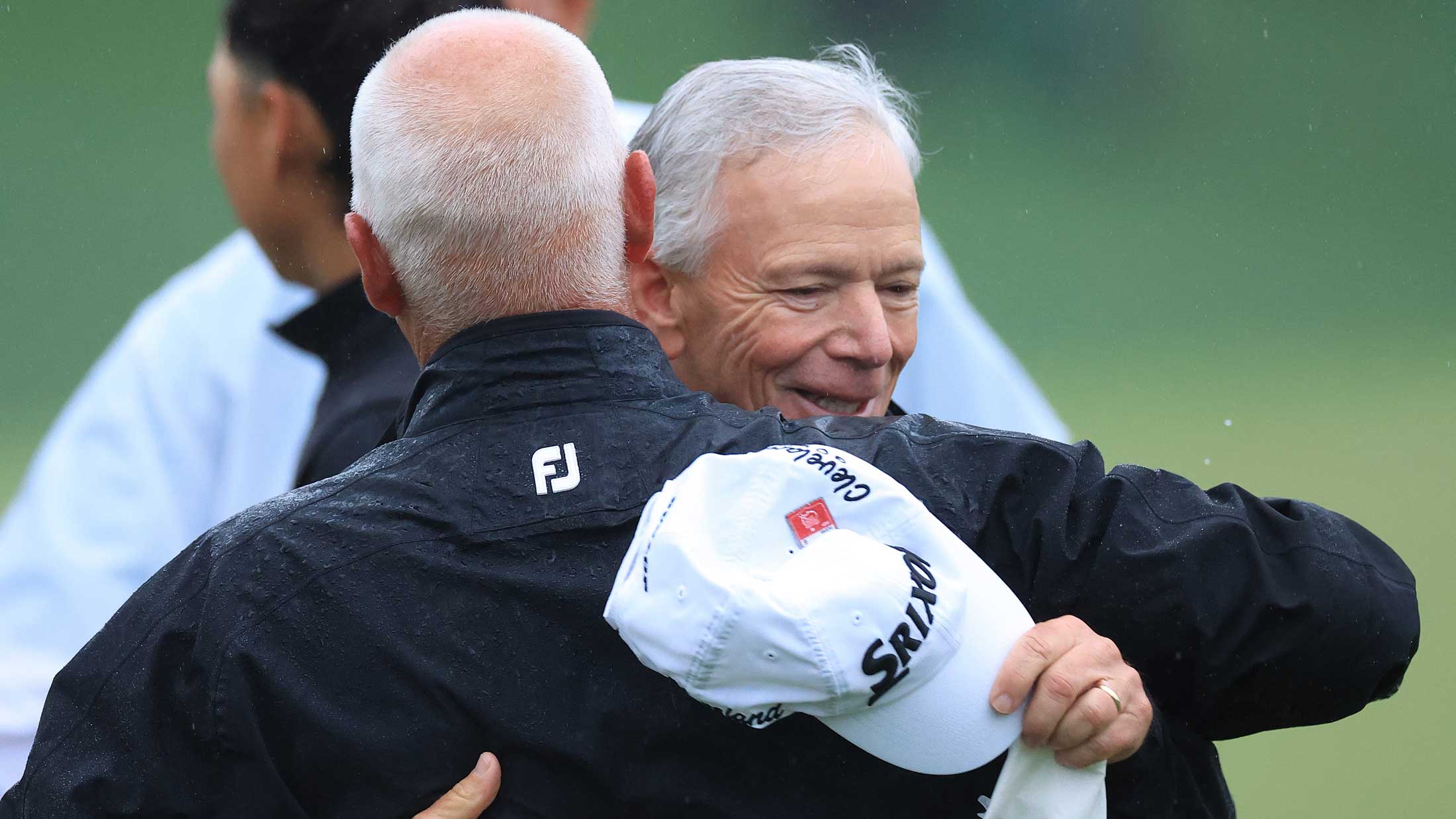AUGUSTA, Ga. – Above 26,000 feet on Mount Everest is called the “death zone.” It’s where an oxygen-deprived body begins to die and a climber’s judgement becomes impaired.
In golf, those foreboding places only exist at the major championships. Winning anywhere as a professional is rewarding, but it’s the Grand Slam events that take everything from a player for just the slightest chance at glory. It’s why careers are measured by major championships and only the undisputed best set their clocks to those four tournaments. Behind all the bravado and misplaced indifference, it’s what drives Brooks Koepka.
“The ‘death zone’ fuels Tiger [Woods], it fuels the great ones,” explained Claude Harmon III, Koepka’s swing coach, after the two reunited last year. “They like the cold and the lack of oxygen and the bodies. Brooks is like that, he’s comfortable when it’s messy. He likes it dirty and when there’s chaos.”
Full-field scores from the 87th Masters Tournament
That’s exactly what he got on Saturday at this muddy Masters, where an overnight storm devolved into a proper deluge. The temperature plummeted – with a “feels like” of 31 degrees when the ghostly horn suspended play for the day at 3:15 p.m. ET – the rain was relentless and stinging, and Koepka was Koepka.
This was vintage Brooks. Think 2017, ’18 and ’19 when he won four of six majors he played and balked at convention when he opined in ’19, “Sometimes the majors are the easiest ones to win.”
That certainly didn’t seem to be the case in recent years. Since winning his last major, the 2019 PGA Championship, he struggled with various injuries which, predictably, evolved to doubt. The most compelling moment in the Netflix docuseries “Full Swing” was the revelation that Koepka joined LIV Golf, essentially, because he was unsure if he’d ever be healthy enough to be that player again.
“I don’t think anyone realizes how bad the injuries were. It was so close to game over,” Harmon said.
But he did recover, finally. And he reunited with Harmon after what both would probably admit was a less-than-ideal breakup.
“He asked me to come back in November [during the Houston Open] the year before,” Harmon explained. “But the breakup was tough on both of us and I wasn’t ready.”
The two reconnected last July at the LIV Golf event at Bedminster, New Jersey, where Harmon was working with his other power player, Dustin Johnson. “I’m really lost,” Koepka told Harmon. “I still feel like I’m a great player.”
With improved health came an ability to practice and prove that he was still that “great player,” and in October Koepka won the LIV Golf event in Saudi Arabia where he told Harmon, “We got the band back together.”
“I told him it wasn’t going to take long,” Harmon said. “We went back to everything he had been working on before the injuries.”
In the fractured world of professional golf, it was difficult to predict how Koepka, or any of the other 17 LIV players in this week’s field, would perform at Augusta National, but Harmon and those inside Brooks’ circle saw a clear trend.
He won last week’s LIV Golf event in Orlando, Florida, after switching from an 8-degree driver to a 10.5-degree model, and the return to the surprisingly friendly confines of Augusta National only fueled his building confidence.
He played a practice round with Rory McIlroy earlier this week. Whatever animosity that might exist between the two sides in pro golf’s civil war, be they real or perceived, melted away as the old Brooks settled into familiar routines.
“It’s just competitively where you miss playing against them, right? Because you want Rory [McIlroy] to play his best and Scottie [Scheffler] to play his best and Jon [Rahm] to play his best and go toe-to-toe with them. I do miss that, and that’s one thing that I do miss,” Koepka said Friday.
Sunday will be exactly what Koepka craves – a 30-hole slog paired with Rahm to move within a claret jug of the career Grand Slam. Before play was mercifully halted on Saturday, Koepka was 1 under through six holes and cruising four shots clear of the Spaniard, following opening rounds of 65-67.
The transformation has been extraordinary when you consider that the last time Koepka played against the likes of McIlroy, Rahm and Scheffler, he missed the cut at the ’22 Masters and Open and finished 55th at the U.S. Open and PGA Championship.
That’ll seem like a lifetime ago when he begins a soggy Sunday at Augusta National as imposing as ever.
“In a week it’s gone from, he took the bag [the guaranteed money to play LIV Golf] and was washed up to, ‘He’s back,’” Harmon said. “Whether he wins or not, it’s just good to see him back to where he wants to be.”
Even in the mud and muck there was a lightness to Koepka’s step that had been missing for some time. Under the unyielding spotlight of a major championship, with the weight of the world on his broad shoulders – professional golf’s “death zone” – this is where he feels the most comfortable, where he feels the most alive.
“We, as a team, had to say to Brooks, ‘You’ve spent so much time on the LIV team we need you to focus on golf,’” Harmon said. “Right now, it looks like it did in 2019. Maybe this is Brooks 2.0.”








